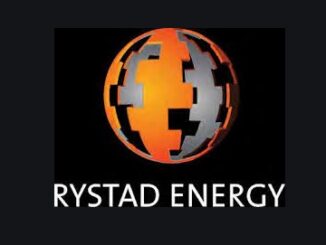
“Modern-day socialists obtain their goals not by nationalization of companies but through regulation. In this case, auto manufacturers must go all-out for EVs, even though there’s no credible evidence that getting rid of fossil fuels will save the planet.” Steve Forbes
A recent article in the Wall Street Journal, “EV Boom Remakes Rural Towns in the American South,” chronicled the massive investment companies are making in plants to build EVs, electric vehicles, batteries, and EV-related parts and materials. Here are a few examples:
The U.S. auto industry is accelerating its move south as car companies pour billions of dollars into new factories in Georgia, Kentucky and Tennessee.
The auto industry’s geographic shift has been slowly progressing for decades, but has sharply picked up in recent years with the transition to EVs. Automakers are now rushing to construct assembly plants and battery-making facilities—some sitting on sites the size of 60 football fields.
Auto companies have announced more than $110 billion in EV-related investments in the U.S. since 2018, with about half that sum destined for Southern states, according to the Center for Automotive Research, a nonprofit based in Ann Arbor, Mich.
A town of 400 people scrambles to prepare for 6,000 auto workers as a giant Ford plant rises.
This sounds like great news for the small towns in southern states, many of which have suffered high unemployment rates and out-migration for decades. But is it? Are these investments laying the groundwork for decades of growth and prosperity?
The answer to that question lies in the reasoning behind the investment spending. One would think that automobile manufacturers are building more EV plants because their current facilities cannot keep up with the demand for EVs. That would be a logical assumption, but it is wrong.
The massive investments in EV infrastructure are not driven by a surge in the demand for EVs but rather by federal government subsidies and promises of more subsidies in the future. The US auto industry had been reluctant to jump into EVs, but suddenly, car manufacturers are looking to construct not only EV plants but also battery-making operations.
What changed was the passage of the Bipartisan Infrastructure Law, BIL, followed by the perversely misnamed Inflation Reduction Act, IRA, which made available massive subsidies to car manufacturers to make EVs and EV batteries. With subsidies flowing freely and implicit promises of more to come, companies worldwide have decided to take advantage of the “free” money.
The BIL contains subsidies of 47.5 billion to build a national network of 500,000 EV chargers, plus more than $7 billion in subsidies for EV batteries and over $10 billion for clean transit and school buses. The IRA provides $370 billion in EV and EV-related industries, such as batteries, plus up to $7,500 in tax credits for the purchase of EVs.
A key goal of the IRA is to force the replacement of internal combustion engines with EVs and simultaneously create a domestic EV and EV battery manufacturing infrastructure. It does so with colossal industry tax credits:
Tesla expects to earn $1 billion in battery tax credits in 2023. Its Nevada plant will soon be able to produce 100 gigawatt-hours of battery cells, and that could grow to 500 gigawatt-hours in the future. At an annual production rate of 500 gigawatt-hours, the credits would be worth $17.5 billion per year.
Ford expects more than $7 billion of tax breaks from 2023 to 2026 and a “large step-up in annual credits” starting in 2027.
GM expects to earn about $300 million this year, with the credits eventually being worth 3,500 to $5,500 per vehicle.
Even with the expectations of these substantial tax breaks, car manufacturers are losing money on each EV they build. Robert Bryce reported recently that Ford reported a $1.08 billion operating loss on its EV business during the second quarter, during which Ford sold 14,843 EVs and lost $72,762 for each EV sold.
Another problem is that the resale value of EVs has plummeted. I interviewed one of the major car auctions in the country, where used cars are bought and sold by dealers. I asked about their experience with used EVs. They said that very few used EVs come to auction, and when they do, they sell for big discounts.
The huge expenditures to build EV and EV battery manufacturing facilities are due entirely to the federal government’s plan to force EVs into a market that is not demanding them. Even China, which is ahead of the US in EVs, has the same problems. Pictures of acres and unsold EVs, such as the one above, have circulated on the internet. The lesson is that consumers cannot be forced to buy EVs, even in communist China.
Where this is headed
Central planning has always failed. The federal goals of 50% of new car sales being EVs by 2030 and EVs totally replacing internal combustion engine vehicles will fail, which will have significant financial consequences. The enormous federal subsidies, coupled with the layers of loans and various financial instruments, will also fail and could create a potential financial crisis resembling 2008.
The significant misallocation of capital will cause capital and labor problems for decades. The states and towns being transformed by federal subsidies will face many issues when companies walk away from their money-losing investments. There is a limit to how much capital companies can lose, and there is even a limit to how much money the federal government can borrow and spend unwisely.
This federal government’s attempt to impose central planning on the U.S. will fail, as has all previous attempts to centrally plan, and significant economic repercussions will plague the U.S. economy for years.



